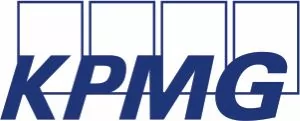Introduction
The President of the Federal Republic of Nigeria recently issued an order which confers certain fiscal incentives on companies doing business in Nigeria. The incentives are in the form of tax exemptions/reliefs – not tax credits – and are aimed at encouraging employment, employee-retention and infrastructural development in the country.
The Companies Income Tax (Exemption of Profits) Order, 2012 (the Order) was made by the President in exercise of the powers under section 23(2) of the Companies Income Tax (CIT) Act, Cap C21, Laws of the Federation of Nigeria, 2004 (as amended).
The Order was made on 27 April 2012. The existence of the Order was, however, only made public on 4 October 2012, when the Minister of Trade and Investment unveiled its threefold tax relief scheme at an investment forum in Lagos.
The key provisions of the Order and its implications for taxpayers in Nigeria are as follows:
1.1 Date of commencement of the Order
The Order has a commencement date of 27 April 2012 and will be in force for 5 years from the commencement date.
Given the above commencement date, one critical question that will presumably be raised by taxpayers is whether or not the tax reliefs provided by the Order can be enjoyed by companies in 2012 tax year. Unfortunately, the Order does not provide a clear cut position on this issue.
However, considering that the performance of companies vis-à-vis the qualification criteria specified in the Order, will most likely be certified by their statutory auditors from the effective date of the Order, it is unlikely that companies (other than those in the first tax year) will be able to enjoy the reliefs until 2013 tax year.
1.2 Categories of tax reliefs and criteria for qualification
The Order specifies three categories of tax reliefs, namely Employment Tax Relief, Work Experience Acquisition Programme Relief and Infrastructure Tax Relief.
(a) Employment Tax Relief (ETR): Based on the provisions of paragraph 1 of the Order, a company can enjoy ETR in the form of an exemption from CIT of up to 5% of its assessable profits in an assessment period. To qualify for ETR, the company must have a minimum net employment1 of 10 employees in the relevant assessment period. Furthermore, at least 60% of the employees must have no previous work experience, and must have been employed by the company within three years of graduating from their respective schools or vocations.
Paragraph 2 of the Order limits the actual ETR claimable by a company to the gross salaries paid to the qualifying employees2. The paragraph also provides that ETR can only be utilised in the tax year in which the employees are first employed. Any unabsorbed deduction cannot be carried forward to another assessment period.
The Order defines 'employee' as "only Nigerians actively employed in Nigeria by the company on a full time basis, who do not hold any other employment and whose employment duties are primarily discharged in Nigeria". Also, the Order prohibits a company from claiming ETR on more than one employee from the same immediate family. In this instance, the Order provides that the number of qualifying employees on which a company can claim ETR will be computed less any such additional member of the same immediate family.
(b) Work Experience Acquisition Programme Relief (WEAPR): The WEAPR claimable by a company in Nigeria is 5% of its assessable profits in the tax year in which it qualifies. Like unutilised ETR, any unabsorbed WEAPR deduction cannot be carried forward to the next tax year. The restriction applicable under the ETR scheme to employees from the same immediate family, also applies under the WEAPR scheme. However, the qualification criteria for WEAPR are different from those applicable to ETR.
To qualify for WEAPR, a company must have a minimum net employment of five 'new employees', and must have retained the employees for a minimum of two years from the tax year in which they were first employed by the company. In essence, a company would qualify for WEAPR in the third year of employment of the 'new employees' retained in its employment.
The Order defines 'new employee' as a full time employee who is being offered employment by the company for the first time in any capacity and who falls within the above definition of 'employee'.
(c) Infrastructure Tax Relief (ITR): Paragraph 3 of the Order grants qualifying companies a CIT exemption of 30% of the cost incurred in providing infrastructure or facilities of a 'public nature'. Based on the paragraph, 'infrastructure or facilities of a public nature' include: power (electricity); roads and bridges; water; health, educational and sporting facilities; and other facilities as may be approved from time to time by the Minister of Finance and published in the Federal Government Gazette upon the recommendation of the Federal Inland Revenue Service (FIRS).
The Order provides that the ITR will be granted in addition to the usual deductions allowed in respect of the costs incurred under the relevant provisions of the CIT Act, "and shall form part of the deductible expenses of the company". In effect, the ITR will be treated as an allowable expense to be deducted in arriving at assessable profits, and not as a relief to be set off against assessable profits.
ITR is to be claimed by a company in the assessment period in which the infrastructure or facility is provided. However, unlike ETR and WEAPR, any unutilised portion of the ITR can be utilised within two assessment periods from the period it first became available.
To qualify for ITR, the relevant infrastructure and/or facilities must have been completed by the company, and available for use by the company and the public, or the community where the infrastructure/facilities are sited. However, the Order provides exception where public use is impracticable or an exemption is obtained from the Minister of Finance.
It is important to note that sections 34 and 40 of the CIT Act (as amended) currently contain provisions which aim to encourage companies to invest in rural areas and provide the infrastructure/facilities incidental to such investments, by way of rural investment allowance. However, one of the major reasons for the ineffectiveness of the incentive scheme is the requirement for the relevant trade or business to be sited in a location that is at least 20 kilometres away from similar facilities provided by the government. The ITR scheme does not include this requirement.
1.3 Prerequisites for claiming exemption
In addition to the above qualification criteria, the Order specifies the following prerequisites for claiming the exemptions:
- The company must have a Taxpayer Identification Number issued by the FIRS.
- The exemption/relief to be claimed by the company must be duly certified by its statutory auditors. The auditors are required to state the particulars specified in the Order in respect of ETR and ITR.
- The certification provided by the company's statutory auditors must be verified by the FIRS.
1.4 Penalties
Based on paragraph 4(4) of the Order, an auditor, company or any other person that provides (or is involved in the preparation of) a certification that contains any false statement or declaration commits an offence under section 42 of the FIRS (Establishment) Act and section 94 of CIT Act (as amended). The penalties specified under the sections include maximum imprisonment terms of 3 and 5 years, respectively, upon conviction.
Conclusion
The Federal Government's decision to grant additional tax incentives to companies is, no doubt, a step in the right direction. For one, the tax exemptions will incentivise companies that have huge human capital needs, or that invest in public infrastructure/facilities in order to carry on their business. The incentives will also provide fiscal 'sweeteners' to companies that invest in the provision of basic social amenities (that may not be critical to their business operations) due to their deep commitment to corporate social responsibility.
It is unclear why the incentives were not extended to sole proprietors and partnerships. One reason might be because sole proprietors and partnerships are taxed by state governments, many of whom would be reluctant to support any policy that would potentially reduce taxes accruable to them.
One wonders if the incentives are significant enough to spur companies to change their orientation towards the creation of employment opportunities or the provision of infrastructure/facilities. This is because such investments will usually result in a net outflow from the company when compared to the above reliefs. Nonetheless, companies will do well to evaluate the benefits they stand to derive from the new tax incentive regime.
Footnotes
1 The Order defines 'net employment' as "the difference between incoming and outgoing employees of the company within the assessment period".
2 The Order did not define the term "qualifying employees". Consequently, it is unclear whether the cap on ETR claimable by a company would be limited to gross salaries paid to employees without any previous work experience.
The content of this article is intended to provide a general guide to the subject matter. Specialist advice should be sought about your specific circumstances.

